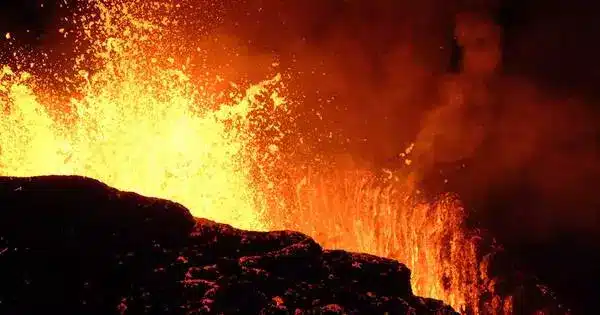Volcano eruption prediction is a complex and difficult field, and scientists use a variety of techniques to monitor volcanic activity and assess the likelihood of an eruption. Earthquakes associated with volcanic activity can provide valuable information about magma movement and potential volcanic unrest.
Researchers at the University of Queensland have optimized a new technique for forecasting how volcanoes will behave, which could save lives and property all over the world. Dr Teresa Ubide of the University of Queensland’s School of the Environment and a group of international collaborators have tested a new application of the tongue-twisting method: laser ablation inductively coupled plasma quadruple mass spectrometry.
“It’s a mouthful, but this high-resolution technique offers clearer data on what’s chemically occurring within a volcano’s magma, which is fundamental to forecasting eruption patterns and changes,” Dr Ubide said. She described magma as the ‘computer code’ of volcanoes, providing information on the eruption style and lava flow.
The eruption covered more than 12 square kilometres with 159 cubic metres of lava destroying around 1,600 homes and forcing the evacuation of more than 7,000 people – it cost the country the equivalent of around $1.4 billion.
Dr. Ubide
“The chemical changes that occur within the liquid portion of magma during a volcanic eruption are quite incredible,” said Dr. Ubide. “Magma is composed of liquid melt, gas, and crystals that combine within the volcano. There are frequently so many interfering crystals that the magma resembles a rocky road, making it difficult to observe its chemistry. To get rid of these crystals, we blast the cooled melt, also known as the rock matrix, with a laser similar to those used in eye surgery. The material is then analyzed to determine its chemical composition.”
The method was tested on samples collected during the spectacular but destructive 2021 eruption on the Canary Island of La Palma, which lasted 85 days.

“The eruption covered more than 12 square kilometres with 159 cubic metres of lava destroying around 1,600 homes and forcing the evacuation of more than 7,000 people – it cost the country the equivalent of around $1.4 billion,” Dr Ubide said.
“Live monitoring data is critical for understanding how volcanic eruptions may evolve and providing warnings and advice to people.” Earthquakes, ground changes, and gas data provide indirect information on what is going on inside an active volcano, but the chemistry of the melt is a direct measure of the magma’s ‘personality,’ its behaviour during an eruption, and the potential impact on populations and infrastructure. The data we collected during this eruption could be used to improve volcano monitoring and risk management in the future.”
A similar technique is now being tested on volcanic ash, which can be sampled more easily during a volcanic event.
“We are very excited to collaborate with volcano observatories to implement the method as a monitoring tool,” said Dr. Ubide.














